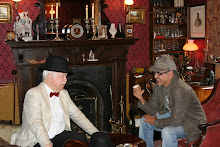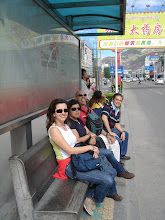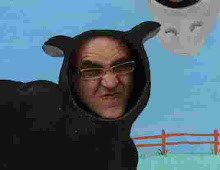And again with the words of Luis Machado…
If we climbed high on the top of the mountain with Eddie Vedder, up to Huamachuco, with Eddie we kept moving in the mountains in the next morning. We have arrived before 6 in the morning to Lake Sausococha, a true Gods mirror, which quickly swallowed us with its tranquility and purety. Just Breath say the lyrics and that was exactly what we did. Deep breath and try to record in our memories that peace, while absorbing the energy irradiated by the sun that slowly and sleepy was rising up in the sky. The needed energy for the day that we anticipated as a long one.
And so, with our batteries completly full, after “crossing” cigarettes
in way that recall D’Artagnan and the 3 mosqueteers, we put our feet on the way
with this two new Peruvian friends towards the top of the Andes, at 4300m
height, leaving the cold Huamachuco (the Sombrero of Halcon) behind. Up above
we felt like giants, completely melted with nature. Once again we could see the
world by the Condor´s perspective, without having to leave our feet from the
ground. For us, only that moment was important, past has been left behind and
the future would come as itself would like to do it... There we were the center
of the universe… There we were on the top of the world. With Oasis (Don´t look
back in anger) and Night Visions (on the top of the world)
E de novo com a palavra de Luis Machado...
E se com o Eddie Vedder nos elevámos bem alto nas montanhas até à remota
cidade de Huamachuco, com ele continuámos a percorrer a cordilheira na manhã
seguinte. Ainda antes das 6 da manhã, chegamos à Lagoa de Sausacocha, um
verdadeiro espelho dos Deuses que rapidamente nos engoliu com a sua
tranquilidade e pureza. “Just breath” diz a música e foi mesmo isso que
fizemos. Respirámos fundo e tentámos gravar na nossa memória aquela paz à
medida que íamos absorvendo a energia do sol que, dorminhoco, se
ia preguiçosamente levantando no céu. A energia ideal para enfrentar um
dia que se adivinhava longo.
Já com as baterias bem carregadas, e depois de um cruzar de cigarros, a
fazer lembrar o D’Artagnan e os 3 Mosqueteiros, seguimos com os dois novos
companheiros de viagem em direcção ao topo da
cordilheira andina, até aos 4300m de altitude, deixando a gélida e solarenga
cidade de Huamachuco (o Sombrero de Halcon em Quechua) para trás.
E bem lá no alto sentimo-nos como gigantes, uma parte integrante da
natureza. Uma vez mais podémos ver o mundo da perspectiva do Condor, sem que
para isso tivéssemos sequer que tirar os pés do chão.
Lá em cima só importava aquele instante, o passado tinha ficado para
trás, o futuro haveria de vir como ele próprio bem entendesse... ali éramos o
centro do Universo... ali estávamos no topo do Mundo (Oasis, Don’t look back in
anger e Night Visions, On Top of the World)."
.jpg)




